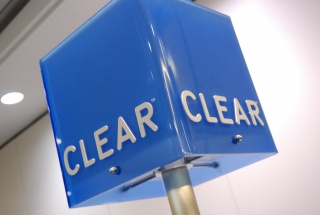Writing for Business Success/Effective business writing/Clarity
| “ | Clarity in business writing is not a luxury. | ” |
| —Sir Richard Branson, Founder, Virgin Group | ||
On this page, we explore three techniques to make written communications clearer:
- using precise language
- choosing plain words instead of complicated ones
- defining lists with bullet points and numbers.
Precision
Business communication should be clear, specific, and full of meaning. For example:
| Avoid | Try |
|---|---|
| Capable of greeting many customers while attending to a multi-line phone. | Capable of greeting 25 customers an hour, while managing incoming phone lines for six district managers. |
| Your order has been received and will ship shortly. | Order number 1234, received August 1, ships on August 5. You should receive the order on August 8. |
Plain Words
When trying to enhance your reputation, it is tempting to use complex words in order to appear intelligent and sophisticated. Unfortunately, this tends to make your ideas difficult to understand and could potentially damage your credibility. Remember the focus of your writing should be on the reader understanding the message. Instead of focusing on “sounding intelligent,” concentrate on writing accurate content with precise, unambiguous words, so that your message is transmitted clearly. In other words, be precise and understandable.
| Avoid | Try |
|---|---|
| It seemed as if the lawyer was trying to obfuscate the meaning. | It seemed as if the lawyer was trying to confuse the meaning. |
| The remuneration the contractor receives is commensurate with the time and materials used. | The pay the contractor receives is equal to the time and materials used. |
Lists
Lists can be used in several ways. Working with numbered lists or bulleted lists is a fast way to draw attention to several items. Lists add white space to a document, which helps the reader. They add emphasis because they stand out on the page. Numbered lists are often used either when order of importance matters, or when the number of items in the list matters.
| Avoid | Try | Why |
|---|---|---|
| The store needs several items to process the refund for the incorrect billing. If you have the receipt, we’ll need that. After you find the receipt, circle the incorrect payment and add the voided check to the envelope. Remember that a stamped return envelope will get your money back more quickly. Please be sure to add that. | To process your refund, the store needs several pieces of documentation. Please do the following:
Include all items with your request. |
A numbered list provides the correct order and structure for the reader. It also creates white space in the message, which makes it easier to read. |
| When you go to the store, can you remember to get the items I need for my recipe? I forgot to get one orange, eggs for the mix (2), and the red for the icing, so I’ll need one bottle of red food coloring. | At the store, please purchase:
|
It’s likely the shopper only needs to know what to buy, not why to buy it. |
Acknowledgements
The content on this page (apart from the activity) was adapted from Word choice and tone, authored by Susan Kendall and provided by Lumen Learning under a CC-BY-4.0 licence. The content is part of the online course Business communication skills for managers.
